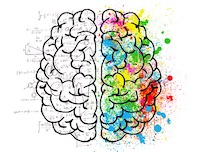Improving learning with neuroscience and LEGO
In a training, the goal is to have people learn. That should be obvious and yet we frequently see sessions where people walk out, having been entertained, but not having learned anything.
Knowing when to Quit
In general, none of us are as good at decision making as we like to think we are. In particular, there is one mistake that we make frequently and that’s not recognizing when it’s time to quit.
Hero culture
It’s fairly common to have a junior team of people, with one far more senior person leading them. This can be an effective way to grow skill across the org.
Mental Health and GenAI
I’m seeing more and more stories about people having mental health conversations with various GenAI tools.
What aren’t we hearing?
A few nights ago, my son and I went for a walk at Dilworth Mountain Park to admire the sunset. At one point, I noticed that he had his hands covering his ears and I asked him why.
Cross training
When we see “fractional people”, people who are spread across teams, the most common reason is that they’re one of a limited number of people with a specific skill. There is a real cost to having fractional people in the environment, so when we consider how we could make the overall teams better, “cross training” is often brought up as an action. Let’s hold a training session or write up some documentation so that other people can learn.
Getting out in nature
There are real neurological benefits to getting out in nature. Let’s look at four of those.
Using dates to motivate
I sometimes see teams that make up arbitrary dates to “motivate” the teams to get work done faster. Not only does this not work over the long term, it often makes things worse.
Orientational metaphors and WIP
We all have an unconscious bias that says that up is good and down is bad. Lakoff and Johnson expand on this in their classic book “Metaphors We Live By”.
AI and Critical Thinking
While it doesn’t seem surprising that reliance on AI tooling would blunt our critical thinking, I am surprised how quickly it’s happening. AI tooling really hasn’t been in common use for all that long and already there are enough observable effects to be able to have studies on it.
